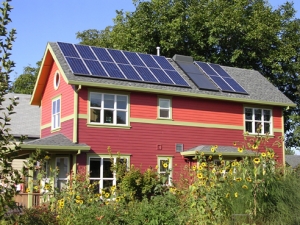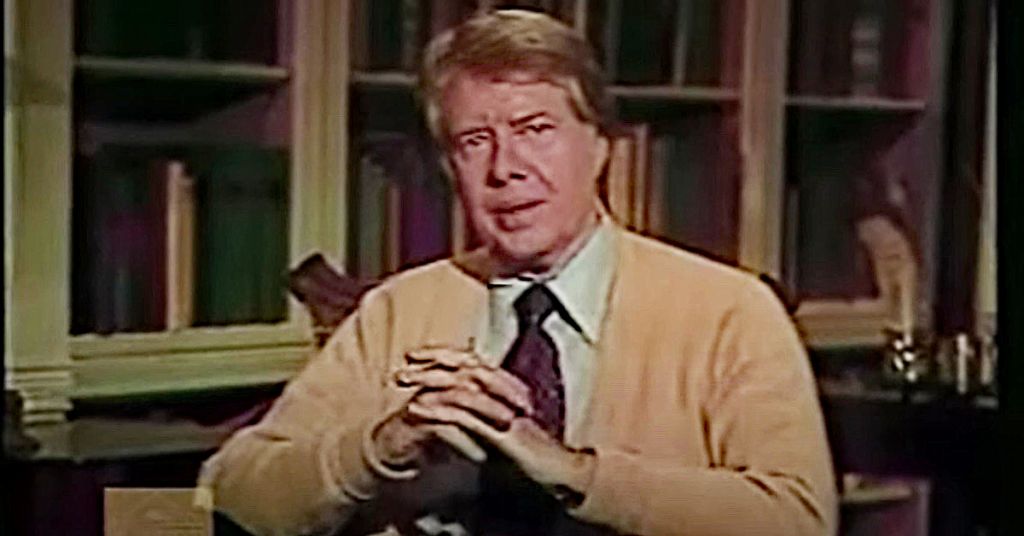 It’s the reassuring hum of the refrigerator late at night, the random tumble of laundry in the dryer. It pushes the second hand and the turbine. We call it ‘power’ for good reason, because without it we’d be choppingand pumping and flicking the whip at beasts of burden over interminable distances and times.
It’s the reassuring hum of the refrigerator late at night, the random tumble of laundry in the dryer. It pushes the second hand and the turbine. We call it ‘power’ for good reason, because without it we’d be choppingand pumping and flicking the whip at beasts of burden over interminable distances and times.
The juice of commerce and comfort, it runs our lives. But don’t worry: It’s not The Matrix – it’s The Grid. And you never notice it unless it’s not there.
Behind the scenes, the grid is undergoing profound changes.
The Grid. The Grid. The Grid
The grid is a nebulous concept for most people. You don’t notice it unless it’s not working. So what is it exactly?
The west coast grid is a vast network of power generating nodes – dams, solar and wind arrays, gas and coal plants – connected by transmission lines ranging from ancient creosote-drenched wooden poles to buried cables and giant steel skeletons marching across the landscape. It was built piecemeal starting in the early 20th century, reaching its peak expansion with the mid-century construction of the great federal dams on the Columbia River. The Pacific Northwest grid is separate from the rest of the country, and itself comprises layers of smaller networks called ‘balancing areas.’
What does balance mean? Electrons can’t sit still, and for them to be maximally useful to humans their flow needs to be controlled. When there is too much power or too much demand, blackouts, power surges, and other problems spring up. In each balancing area, one entity is responsible for matching supply to demand as precisely as possible. The Gorge’s balancing authority is the Bonneville Power Administration.
BPA checks the balance every four seconds, according to Jeffry Dagle, chief electrical engineer for electricity infrastructure at Pacific Northwest National Laboratory. The system likes ‘baseload’ power: a supply of potential power that can be produced on demand – like water behind a dam or a natural gas plant – to operate turbines. Wind and solar currently can’t be stored in this form; when the wind is blowing and the sun shining, the electrons generated have to go right into the grid whether they’re needed or not.
There are intriguing ideas under development for large-scale batteries that can store wind and solar power so it too can be released gradually, says Vijay Satyal, energy policy analyst for the Western Electricity Coordinating Council. “The challenge right now is for the utilities to find cost effective and commercially viable ways [to integrate storage],” he says. “We factor [batteries] in but they are not game changers yet.” But the grid is being forced to change because both technology and the physical environment.
A greener grid? Technology. Just as our unsustainable practices are catching up with us, greener technologies are coming to fruition. These technologies are driven partly by policy and partly by economics. For example, at the policy level the EPA’s Clean Power Plan requires the electric power sector to decrease its carbon emissions by 30 percent by 2030 based on 2005 levels. At the same time, the cost of renewables has fallen dramatically. Take solar panels: their cost is now within reach of many homeowners.
Gorge dwellers sit amidst the largest network of renewable energy generation in the country – three massive federal dams, numerous wind projects (such as Portland General Electric’s Biglow Wind Farm near the City of Wasco), and a smattering of solar projects. Most Gorge residents get their power from the BPA via a public utility district or an electric co-op.
One-way grid going away. The grid was originally structured as a one-way system managed centrally and in a top-down hierarchy: from the power generator, such as a government or big private company, to the power consumer. But that system is changing.
The biggest change to the grid since Edison is the conversion to a system with multiple actors generating energy using varied technologies and communicating simultaneously in all directions, says Carl Zichella, the Natural Resources Defense Council’s director of western transmission. For example, wind and solar can be installed in many places and at many scales in what’s called a distributed system.
But just as setting up a home wi-fi network can be complicated, getting all the parts of the grid to see and communicate with each other is a major challenge.
“When we get more and more of these distributed resources to coordinate properly, that’s also benefiting the overall system,” says Dagle. But if we all just hook up to the grid and “treat the rest of the grid as an infinite pool of power,” he adds, “we start to have these problems. These technologies exist in isolation from each other.” But they have to somehow fit into a single system: the grid.
Utilities hope part of the answer is to make meters and all the other components ‘smart,’ so that conditions at any point can be known by the whole system. Even your refrigerator and clothes dryer could become players, deciding when to draw power from the grid to cause the least stress on the system.
Drought. Storms. Wildfires. The changing physical environment. Looming climate change foretells more perturbations in the Pacific Northwest – severe long-term drought, wildfires, storms and floods – that can destabilize the grid. But a distributed grid can actually offer stability in these conditions. In order to guarantee safety, distributed sources of power already have to be ‘islandable’ – that is, to keep from electrocuting repair crews, it must be possible to keep your solar array from feeding power into the grid during a widespread outage.
But islands can still use their own power, and this offers a resiliency that the old grid doesn’t have. Todd Olinsky-Paul, resilient power project director for the Clean Energy Group, a nonprofit organization based in Vermont, says, “Distributed power systems at critical facilities” are crucial during a natural disaster.. If New York City hospitals, police and fire stations, and schools had had their own small low-carbon generating capacity, Hurricane Sandy would have been much less disastrous, he adds.
At the moment, the most obvious potential disaster in the Pacific Northwest is drought, because of our heavy reliance on hydro power.  California, with zero snowpack, has just declared its first ever water restrictions. Are we next or more importantly, is western Canada? It is British Columbia’s snowpack that affects Columbia River’s hydro power, not the snowpack in Oregon and Washington.
California, with zero snowpack, has just declared its first ever water restrictions. Are we next or more importantly, is western Canada? It is British Columbia’s snowpack that affects Columbia River’s hydro power, not the snowpack in Oregon and Washington.
“We are not in drought,” says BPA spokesperson Michael Hansen. In British Columbia the snowpack is about 110 percent of normal, he says, and further south “the higher elevations are doing well. The whole basin is 90 percent of average. We’re not doing anything extraordinarily different than we would do in any other average year.” As to what will happen over the summer, he adds, “It is still a little early to tell.”
In recent decades glaciers and snowpacks throughout the western U.S. have shrunk dramatically and are predicted to continue shrinking—an impact that will force profound changes in the way we get electricity.
For the time being, the bulk of the electricity will come from existing sources and consumers likely won’t notice radical changes to the grid. But it’s worth remembering that conservation and efficiency are still the best way to cope with our energy demands and the stresses on the environment.
Over the long term, though, business as usual is not going to work, says Kristin Eberhard, a senior researcher at the Sightline Institute in Seattle. “We’ve had this great gift in the Pacific Northwest of hydro power that is pretty cheap,” she says, but “it is not guaranteed us forever. There are costs to continuing on the path we’re on. There’s also hope. But we do have to change our path if we want to keep living some semblance of the lifestyle that we have lived.”[/fusion_builder_column][/fusion_builder_row][/fusion_builder_container]











